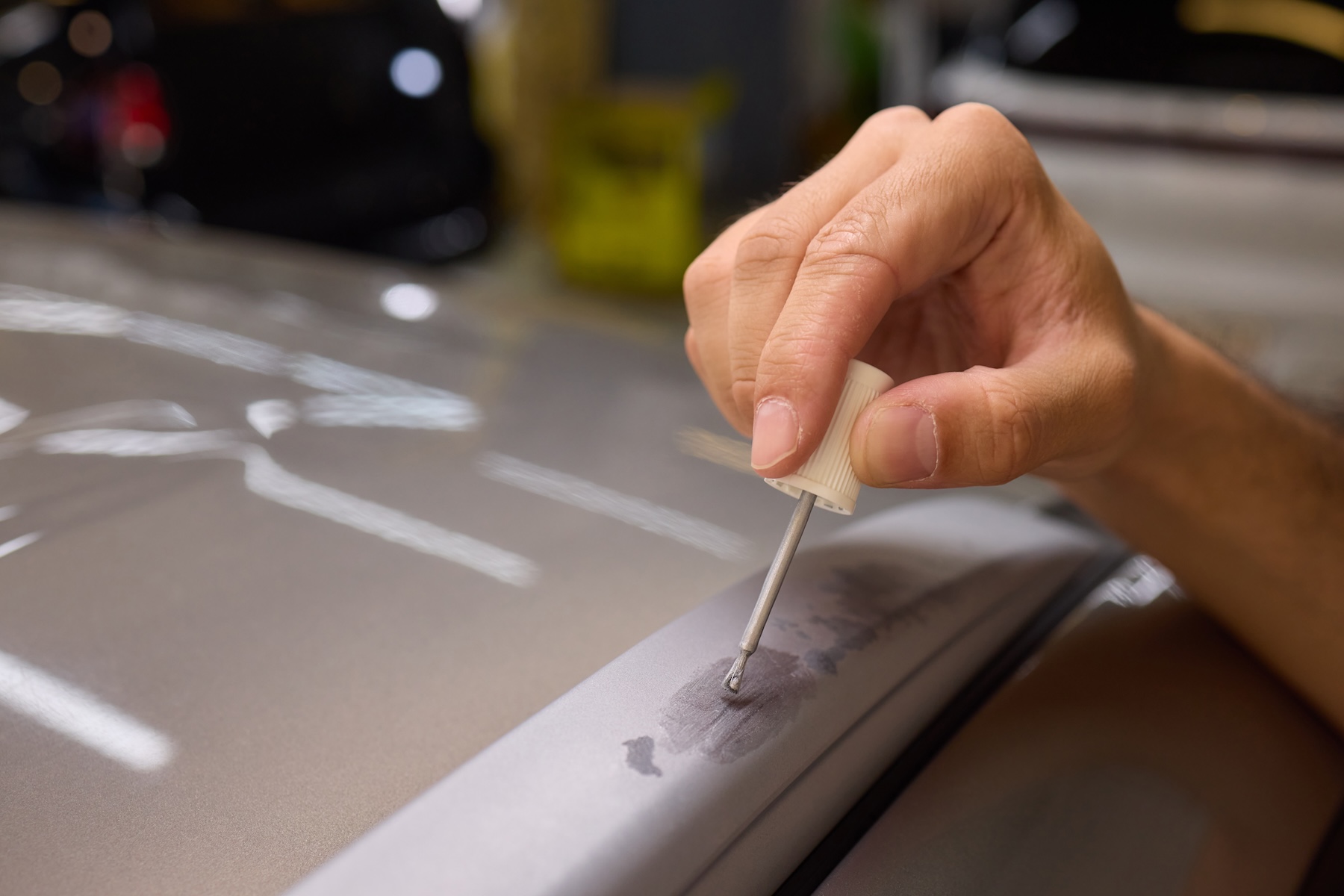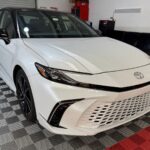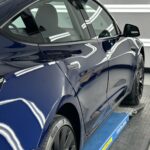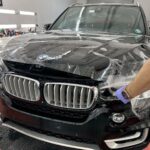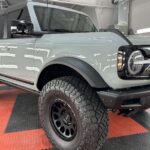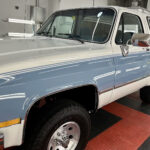If you’re planning to protect your vehicle with a ceramic coating or Paint Protection Film (PPF), there’s a crucial step you can’t afford to skip: paint correction. While both ceramic coating and PPF offer excellent protection, applying them over a surface that has scratches, swirls, or blemishes will permanently lock those imperfections beneath the protective layer. This can diminish the overall appearance and effectiveness of the coating or film. In this article, we’ll explain why professional paint correction is an essential part of the process and how it ensures the best results for your vehicle’s finish.
1. What Is Paint Correction?
Paint correction is the process of restoring the paintwork on a vehicle by eliminating surface imperfections like scratches, swirl marks, oxidation, and other defects. This is typically done using specialized polishing compounds, pads, and machines that level out the imperfections, revealing a smooth and glossy finish underneath.
Common issues addressed by paint correction include:
- Swirl marks from improper washing techniques
- Oxidation due to prolonged UV exposure
- Minor scratches from road debris or accidental contact
- Holograms from previous, poor-quality polishing attempts
When these issues are left untreated, they stand out even more after applying a protective layer like PPF or ceramic coating, making paint correction a non-negotiable first step.
2. Why Paint Correction Before PPF?
Paint Protection Film is a transparent layer of urethane that’s applied to protect your car’s paint from chips, scratches, and road debris. However, PPF is designed to adhere tightly to the surface of your car, and it will capture every detail underneath it—whether good or bad. If your car’s paint has imperfections such as swirl marks or scratches, they’ll be trapped beneath the film, which can make your vehicle look less than perfect.
By performing a full paint correction beforehand, you ensure that the surface is pristine and ready for the PPF to bond seamlessly, giving you the most flawless and durable finish possible.
3. Why Paint Correction Before Ceramic Coating?
Ceramic coating is a liquid polymer that bonds with your vehicle’s paint to create a protective layer, providing resistance to environmental contaminants, UV rays, and minor scratches. While ceramic coating offers long-lasting protection, it’s not designed to “fix” or hide paint defects. In fact, any imperfection present on the paint before coating will be magnified by the glossy, reflective finish.
Paint correction eliminates these flaws, ensuring that the ceramic coating can be applied to a perfectly smooth, defect-free surface. The result is a mirror-like shine that enhances the overall appearance and maximizes the protective benefits of the coating.
4. The Risks of Skipping Paint Correction
Skipping the paint correction step can have long-term consequences for your vehicle’s appearance:
- Trapped imperfections: Any scratches, swirls, or marks left on the paint will be sealed beneath the PPF or ceramic coating, making them impossible to remove without stripping off the protective layer.
- Reduced protection: Uneven or damaged surfaces can prevent proper adhesion of PPF or ceramic coating, compromising their protective qualities and longevity.
- Unsatisfactory appearance: Imperfections under a high-gloss ceramic coating or beneath a clear PPF will be even more visible, detracting from the clean, polished look you were aiming for.
5. The Paint Correction Process
Professional paint correction typically involves the following steps:
- Wash and Decontamination: The vehicle is thoroughly washed and decontaminated to remove dirt, road grime, and other surface contaminants. A clay bar may be used to extract embedded particles.
- Inspection: The paint is inspected under high-intensity lighting to identify imperfections and determine the level of correction needed.
- Polishing: Using a machine polisher, various grades of compounds and pads are applied to the paint to carefully remove surface defects. The level of polishing depends on the depth of the imperfections.
- Finishing: A finishing polish is used to bring out the high-gloss shine and ensure the surface is perfectly smooth.
Once the paint correction process is complete, your vehicle is ready for the final step: applying the PPF or ceramic coating. With the paint now in its best possible condition, the protective layer will bond more effectively, ensuring long-lasting protection and a stunning finish.
6. The Value of Professional Paint Correction
While some car owners may attempt to polish their cars themselves, paint correction is best left to professionals. Experts have the experience, tools, and high-quality products necessary to deliver a flawless finish without causing further damage to your vehicle’s delicate paint. At August Precision, our team specializes in restoring and enhancing vehicle finishes, ensuring that your car looks its absolute best before any protective film or coating is applied.
7. Enhance Your Vehicle’s Longevity
In addition to enhancing the appearance of your vehicle, paint correction also contributes to its longevity. By removing scratches, oxidation, and other defects, you’re effectively preventing further damage from worsening over time. Paired with a high-quality PPF or ceramic coating, your car’s finish will be protected against the elements for years to come, ensuring that it retains its showroom shine.
Conclusion
When it comes to protecting your vehicle’s paint, the key to achieving a flawless and long-lasting finish is starting with a perfectly corrected surface. Whether you’re opting for PPF or ceramic coating, paint correction is a critical step that ensures your investment delivers the best possible results. Don’t skip this vital process—trust the professionals at August Precision to bring out the true beauty of your car before applying any protective layer.

